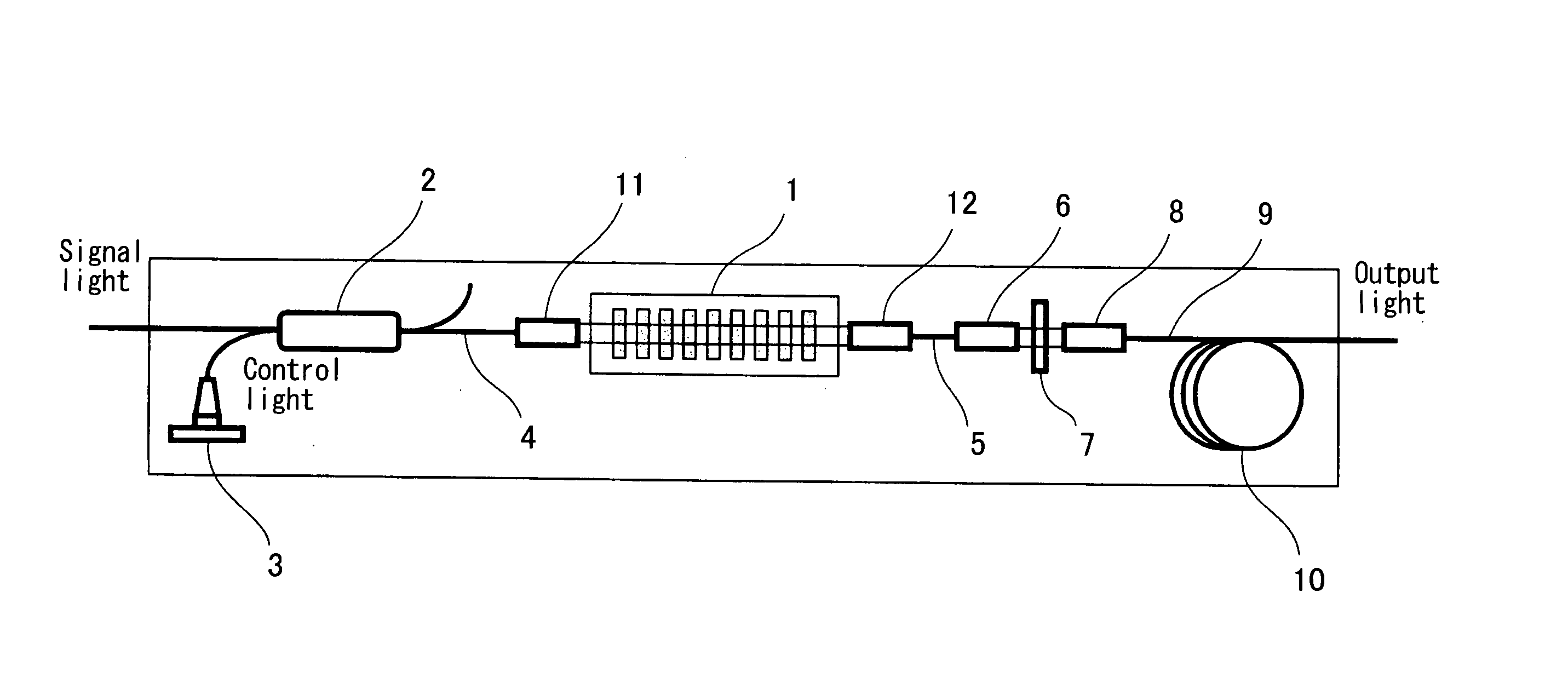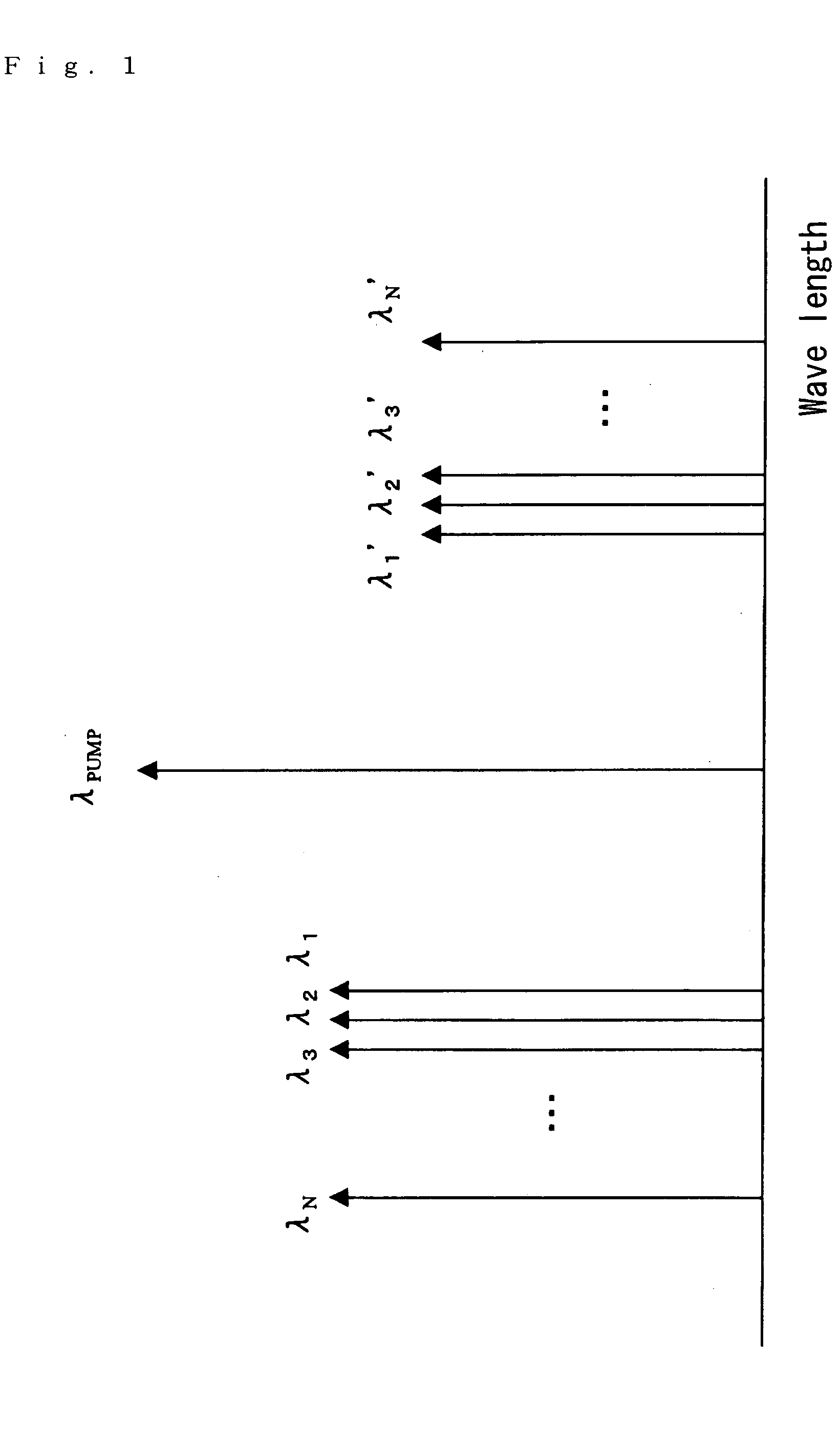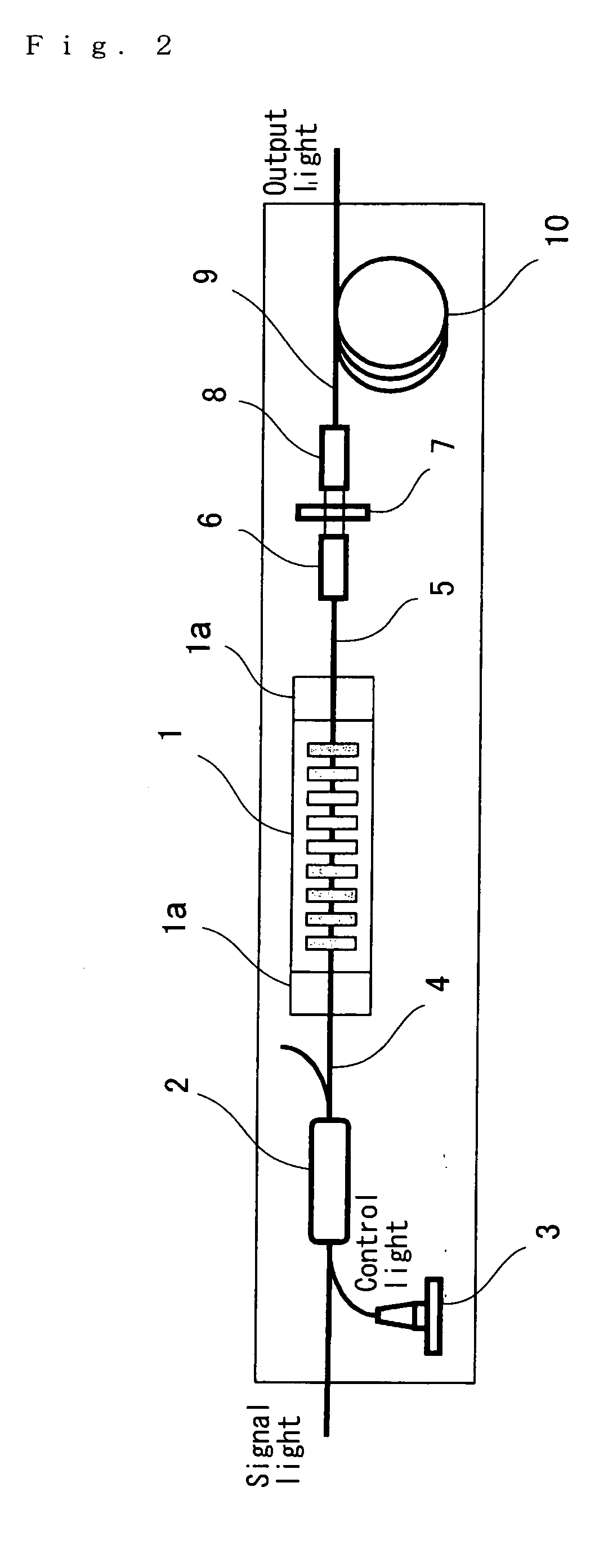Optical communication-use wavelength conversion device
a wavelength conversion device and communication technology, applied in the field of optical wavelength converters, can solve the problems of slow conversion speed, device requirement, disadvantageous integration and cost, etc., and achieve the effect of increasing the efficiency of wavelength conversion
- Summary
- Abstract
- Description
- Claims
- Application Information
AI Technical Summary
Benefits of technology
Problems solved by technology
Method used
Image
Examples
Embodiment Construction
[0043] Working configurations of the present invention will be described below with reference to the figures.
[First Working Configuration]
[0044]FIG. 2 is a schematic structural diagram which shows a WDM wavelength converter constituting a first working configuration of the present invention. In FIG. 2, an optical waveguide structure is formed in a quasi-phase matched quartz crystal 1, and V grooves 1a are formed before and after this structure. Below, a case in which a C-L inter-band wavelength conversion is performed will be described as an example. In this case, if the wavelength λpump of the control light is set so that λpump=0.785 μm, the signal light λin=1.53 to 1.57 m, and the output light λout=1.57 to 1.61 μm. Furthermore, the wavelength bands of the signal light and output light may also be the reverse of the bands described above.
[0045] In FIG. 2, the signal light that is guided by the single-mode optical fiber is coupled with control light that is emitted from a laser d...
PUM
| Property | Measurement | Unit |
|---|---|---|
| wavelength | aaaaa | aaaaa |
| wavelength | aaaaa | aaaaa |
| wavelength | aaaaa | aaaaa |
Abstract
Description
Claims
Application Information
 Login to View More
Login to View More - R&D
- Intellectual Property
- Life Sciences
- Materials
- Tech Scout
- Unparalleled Data Quality
- Higher Quality Content
- 60% Fewer Hallucinations
Browse by: Latest US Patents, China's latest patents, Technical Efficacy Thesaurus, Application Domain, Technology Topic, Popular Technical Reports.
© 2025 PatSnap. All rights reserved.Legal|Privacy policy|Modern Slavery Act Transparency Statement|Sitemap|About US| Contact US: help@patsnap.com



